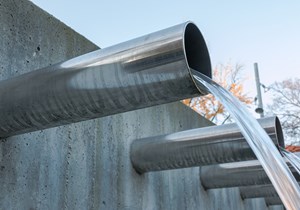Vegas Giving up Bid to Pump, Pipe Water From Rural Valleys
LAS VEGAS (AP) — Las Vegas water officials said Friday they’re giving up a decades-long plan to pump and pipe groundwater from rural northeast Nevada to suburbs and tourist resorts in the state’s largest metropolitan area.

The Southern Nevada Water Authority said in a statement it won’t appeal a judge’s order for the authority to recalculate the amount of water that might be available below ground to supply the project.
The authority will instead update its 50-year water plan to focus on water conservation and solidifying ties to other states that, like Nevada, rely on water from the Colorado River.
That makes Judge Robert Estes’ March 9 decision the final word on the authority’s bid for state approval to use water rights obtained when SNWA bought ranch land in the 1980s in arid valleys in White Pine and Lincoln counties near the Utah border.
“The water they’ve wanted to grab since 1989 never was there for the taking and never will be,” said Simeon Herskovits, lead attorney for the Great Basin Water Network, a coalition of opponents that predicted the project would cost $15 billion and would turn some areas to dust bowls.
Herskovits tallied seven court victories dating to 2009 for environmentalists, Native American tribes, ranchers, two Utah counties and the Church of Jesus Christ of Latter-day Saints, which owns a ranch in one of the Nevada valleys.
Opponents maintained that tribal nations’ due process rights were denied and the pumping plan did little to prevent possible damage to cultural areas including a grove of swamp cedars that area Shoshone tribes consider sacred in an uncommonly wet area Spring Valley in White Pine County.
The authority initially won approval from the state’s top water official, then-State Engineer Jason King, to draw enough groundwater to supply some 170,000 new homes per year in Las Vegas. The authority planned to build a 250-mile (400-kilometer) pipeline for the project
In 2010, the state Supreme Court ordered King hold new hearings, and King in 2011 again approved the authority plan.
Estes in 2013 labeled King’s decisions “arbitrary and capricious” and ordered the recalculation. The state high court backed Estes and King grudgingly rejected the authority’s proposal in 2018.
Las Vegas currently gets about 90% of the water used by most of its 2.2 million residents and more than 40 million tourists a year from the Lake Mead reservoir behind Hoover Dam. The lake was last full in 1983. After 20 years of drought, it is now less than half-capacity. Officials had cast the pipeline plan as key to ensuring a reliable supply.
Patrick Donnelly, of the Center for Biological Diversity in Nevada, said opponents know the water authority still has pumping rights applications pending and still seeks right-of-way approvals from the U.S. Bureau of Land Management for the 250-mile (400-kilometer) pipeline route.
“Eastern Nevada’s fragile ecosystems and rural communities have won a reprieve, but the fight isn’t over,” Donnelly said in a statement. “As long as pipeline permits are still alive, our struggle continues.”
Related News
From Archive

- Glenfarne Alaska LNG targets late-2026 construction start for 807-mile pipeline project
- U.S. water reuse boom to fuel $47 billion in infrastructure spending through 2035
- $2.3 billion approved to construct 236-mile Texas-to-Gulf gas pipeline
- Major water pipe break in Puerto Rico hits over 165,000 customers
- Potomac River Tunnel project enters construction phase beneath Washington, D.C.
- Pennsylvania American Water launches interactive map to identify, replace lead water service lines
- Trump's tariffs drive $33 million cost increase for Cincinnati sewer project
- Utah city launches historic $70 million tunnel project using box jacking under active rail line
- Tulsa residents warned after sewer lines damaged by boring work
- Fatal trench collapse halts sewer construction in Massachusetts; two workers hospitalized



Comments